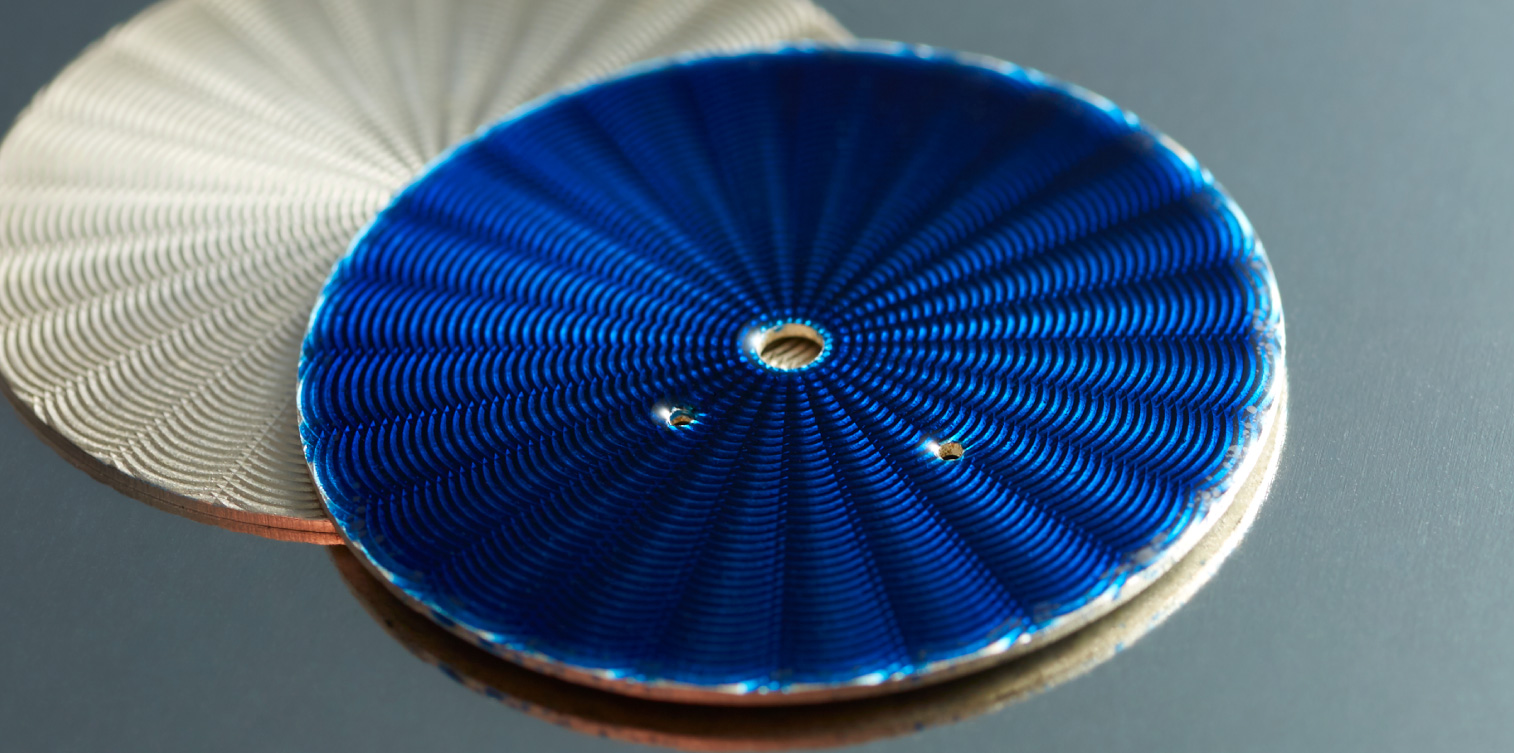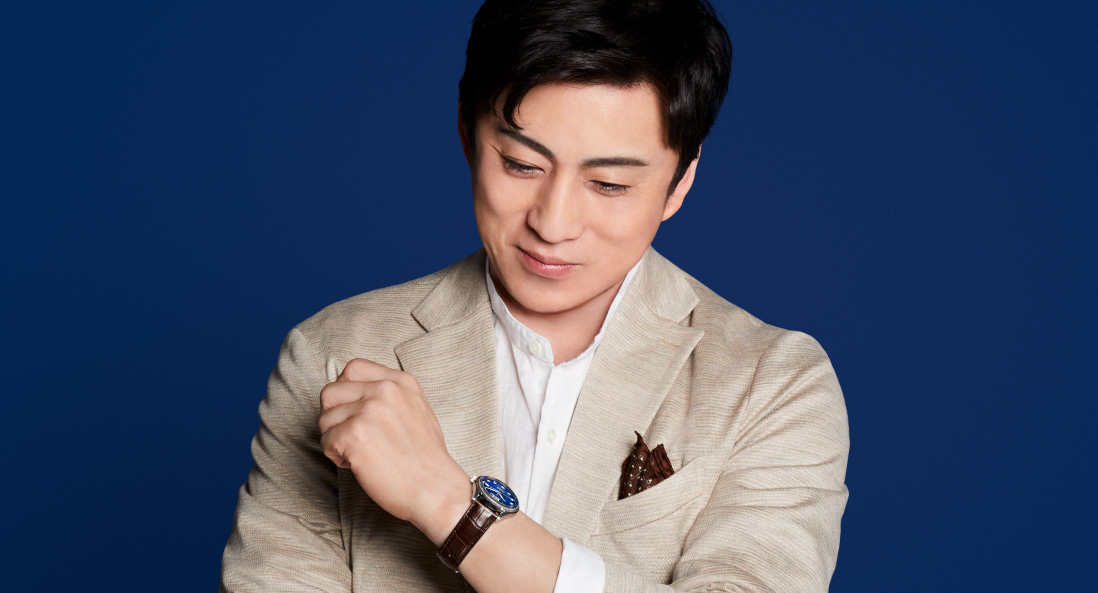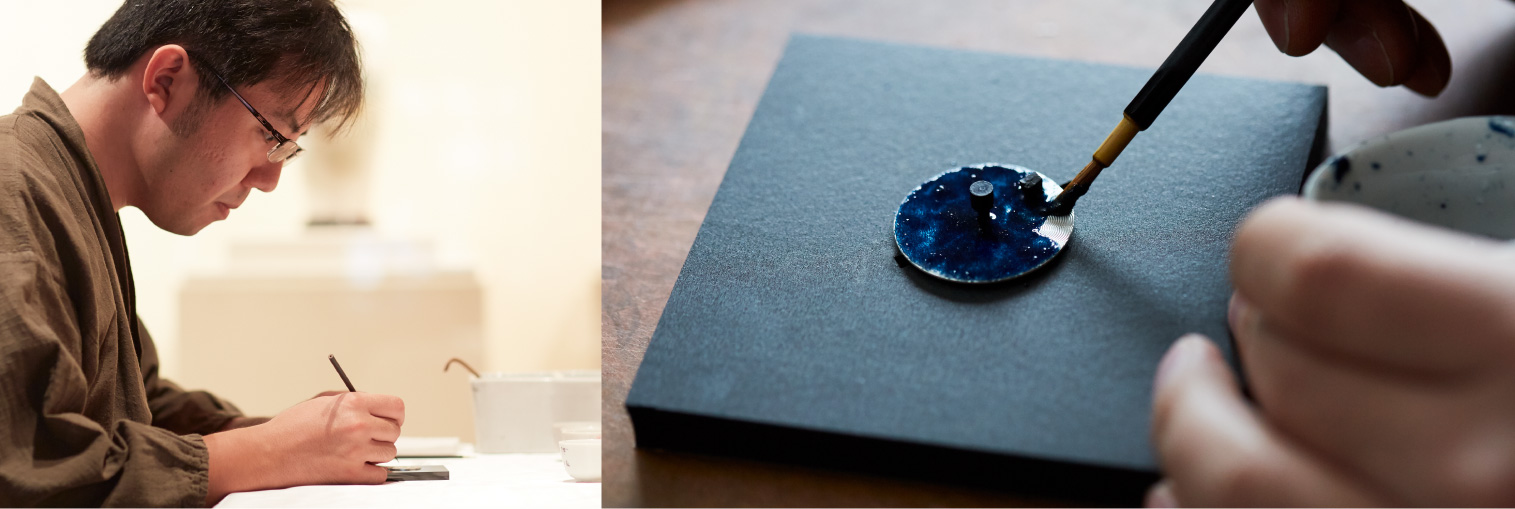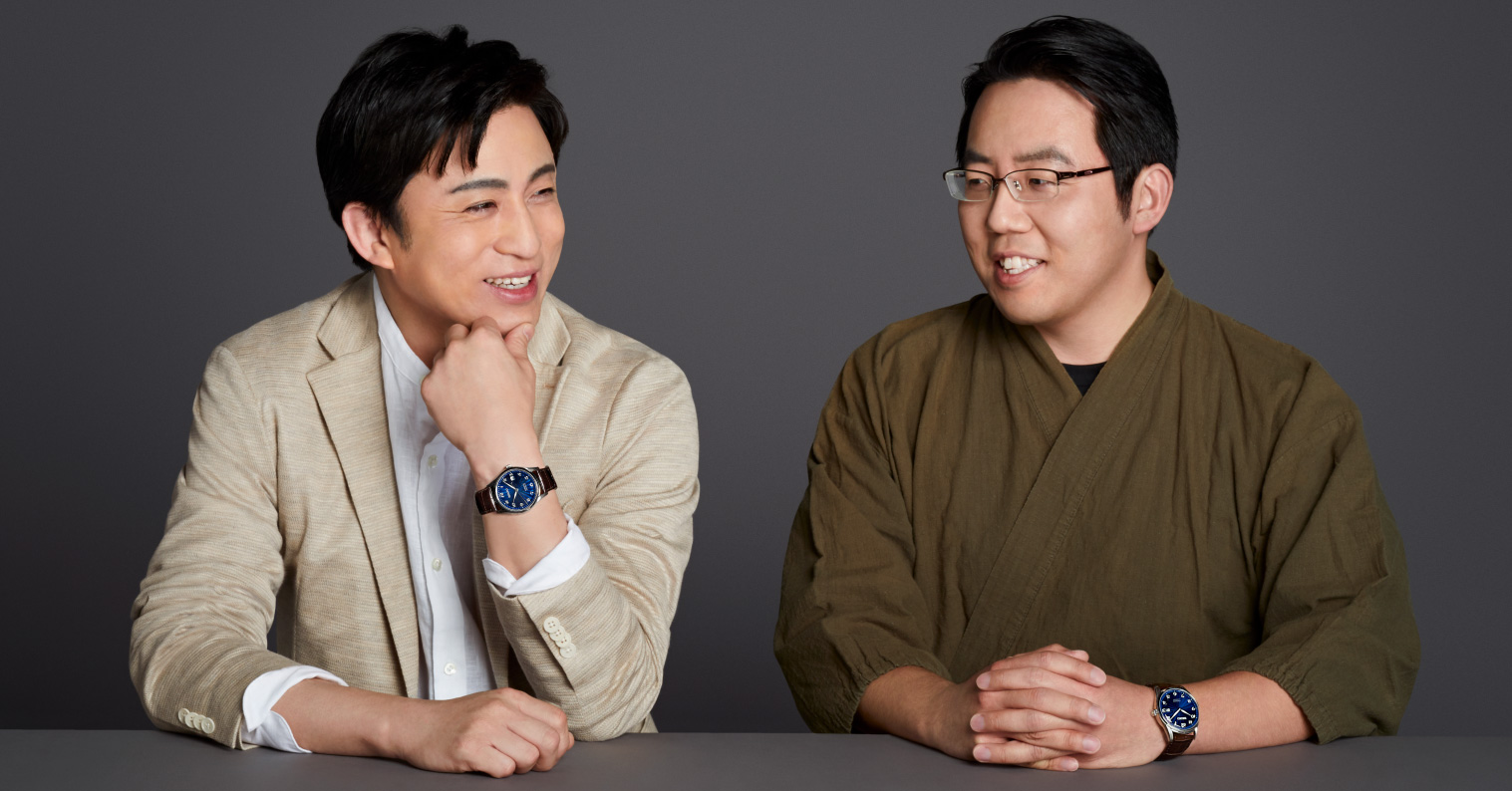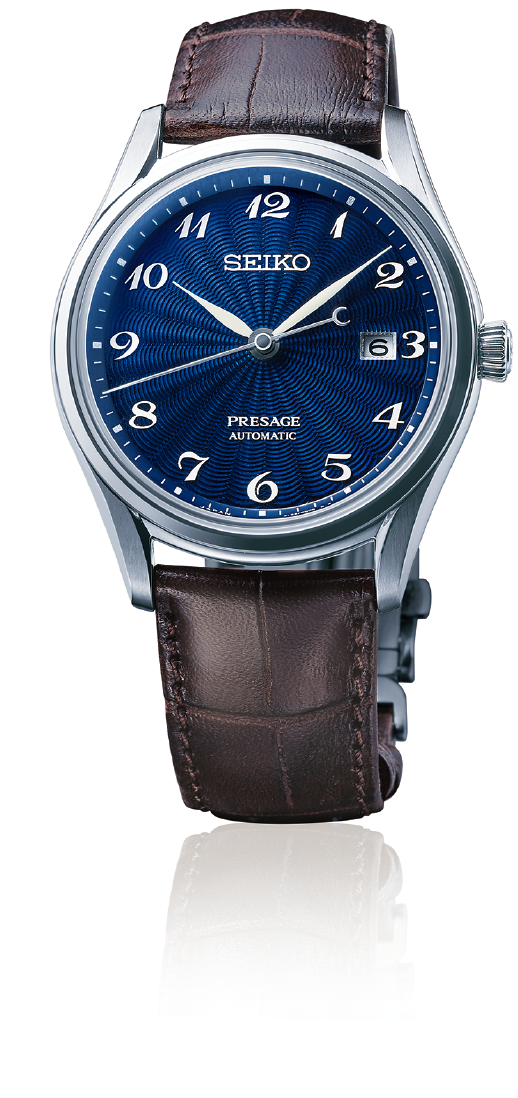Shippo enamel dial: A transparent-blue wavelike pattern
Matsumoto Koshiro: It looks like an azure ocean is spreading across this tiny dial. It’s so beautiful. The coloring has both transparency and depth. How did you create these color tones?
Wataru Totani: I applied a thin layer of specially developed glaze by hand to the metal surface and fired it in the kiln. Actually, I had to repeat that process a number of times. Every time, I kept polishing the surface to gradually realize the precise intended coloring. Color tones tend to change elusively and delicately, reflecting even slight differences in firing temperature and duration. Therefore, to achieve identical color tones, I had to fine-tune one piece after another by hand.
Matsumoto: I didn’t imagine that you did everything yourself — not just glazing but also blending the glaze in advance. I understand that only a lot of work by hand makes it possible to create this particular kind of coloring. When you undertook this watch dial project, I think you had difficulties different from those in producing one-of-a-kind shippo enamel works.
Totani: For ordinary shippo enamel products, we apply glaze to create a layer that is usually 1 millimeter to 1.5 millimeters thick. However, this project required me to limit the thickness to 0.3 millimeters and even make the final product express the deep blue of the ocean. At the same time, I refrained from using lead — which accounts for about 40% of ordinary glaze — so as to comply with Seiko’s strict in-house ecological and safety standards. Lead-free glaze is prone to bubbling. Also, I had to make a set of identical shippo enamel pieces. In other words, I had to do something I’d never experienced before. It took me a considerable amount of time to be confident, to feel “This is something I can do.”
Totani chose to enter a new world of craftsmanship, accumulating new experience and expertise instead of relying on formulaic solutions and the wisdom of the past. Matsumoto thinks the shippo enamel artisan and he have similar attitudes toward their work.
Matsumoto, wearing the Presage watch, says, “The color tones change delicately depending on the way the light hits it. I never get tired of looking at it.”




